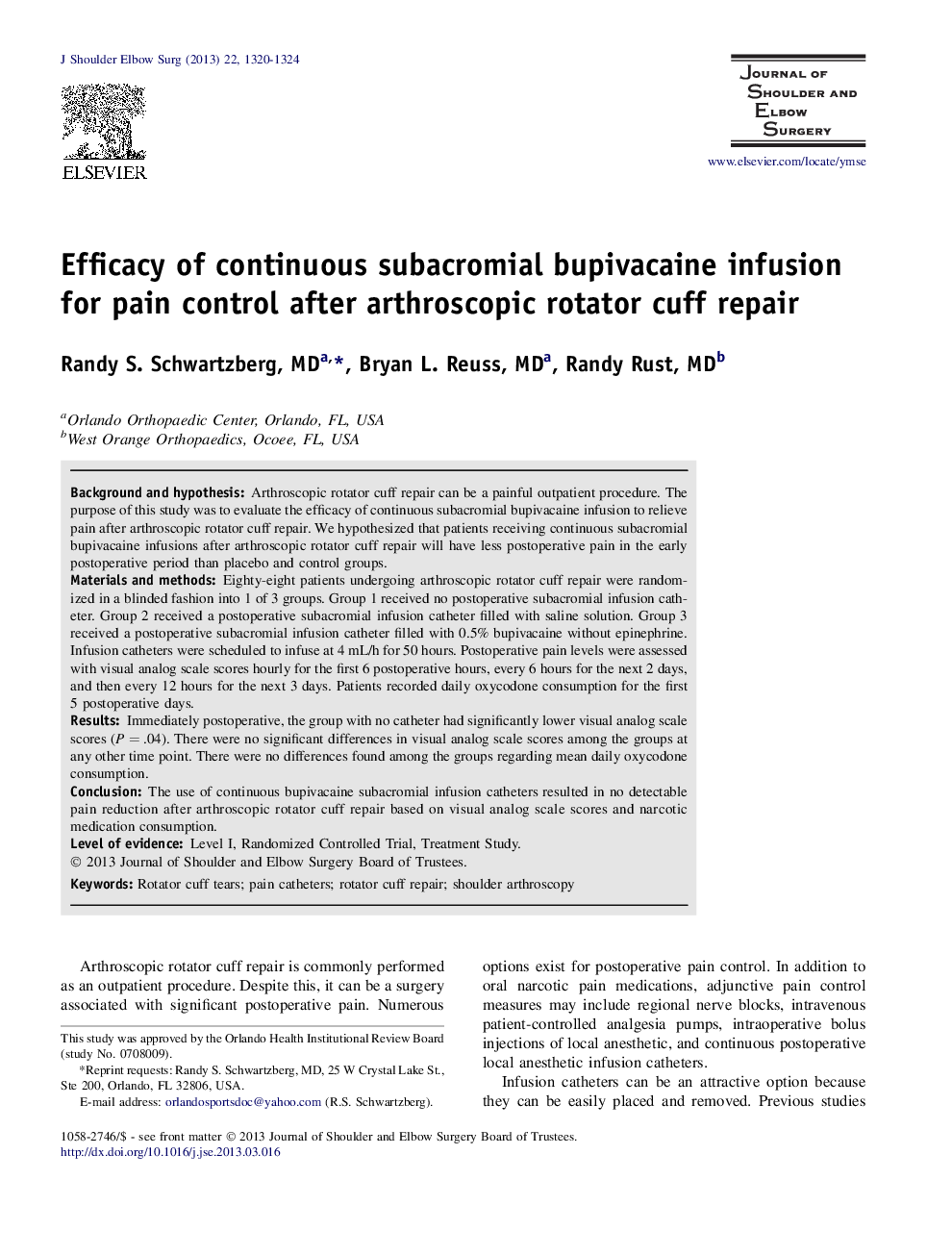| Article ID | Journal | Published Year | Pages | File Type |
|---|---|---|---|---|
| 4074010 | Journal of Shoulder and Elbow Surgery | 2013 | 5 Pages |
Background and hypothesisArthroscopic rotator cuff repair can be a painful outpatient procedure. The purpose of this study was to evaluate the efficacy of continuous subacromial bupivacaine infusion to relieve pain after arthroscopic rotator cuff repair. We hypothesized that patients receiving continuous subacromial bupivacaine infusions after arthroscopic rotator cuff repair will have less postoperative pain in the early postoperative period than placebo and control groups.Materials and methodsEighty-eight patients undergoing arthroscopic rotator cuff repair were randomized in a blinded fashion into 1 of 3 groups. Group 1 received no postoperative subacromial infusion catheter. Group 2 received a postoperative subacromial infusion catheter filled with saline solution. Group 3 received a postoperative subacromial infusion catheter filled with 0.5% bupivacaine without epinephrine. Infusion catheters were scheduled to infuse at 4 mL/h for 50 hours. Postoperative pain levels were assessed with visual analog scale scores hourly for the first 6 postoperative hours, every 6 hours for the next 2 days, and then every 12 hours for the next 3 days. Patients recorded daily oxycodone consumption for the first 5 postoperative days.ResultsImmediately postoperative, the group with no catheter had significantly lower visual analog scale scores (P = .04). There were no significant differences in visual analog scale scores among the groups at any other time point. There were no differences found among the groups regarding mean daily oxycodone consumption.ConclusionThe use of continuous bupivacaine subacromial infusion catheters resulted in no detectable pain reduction after arthroscopic rotator cuff repair based on visual analog scale scores and narcotic medication consumption.
